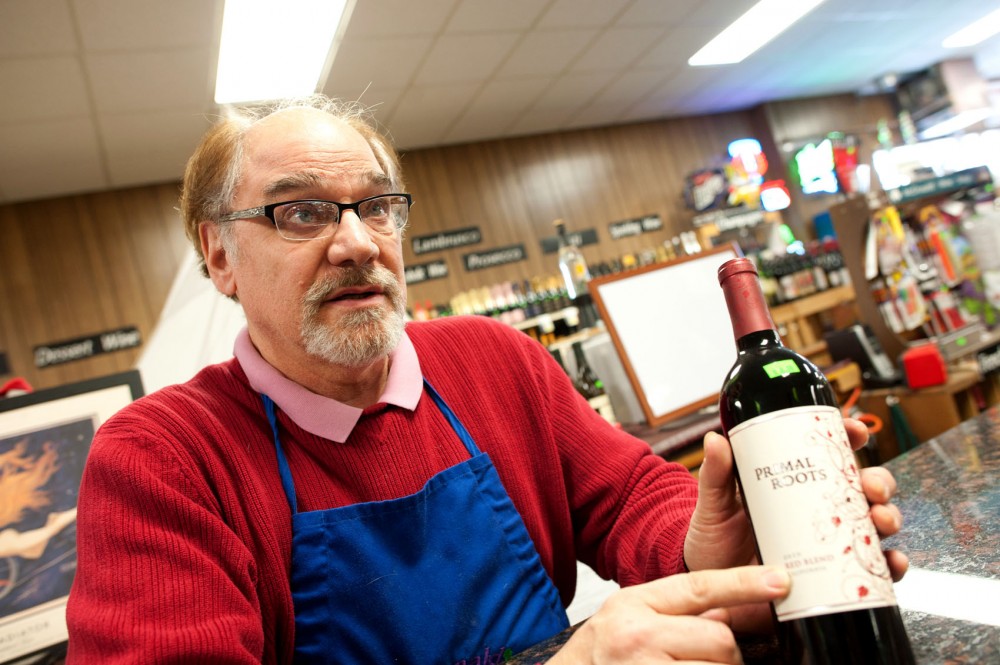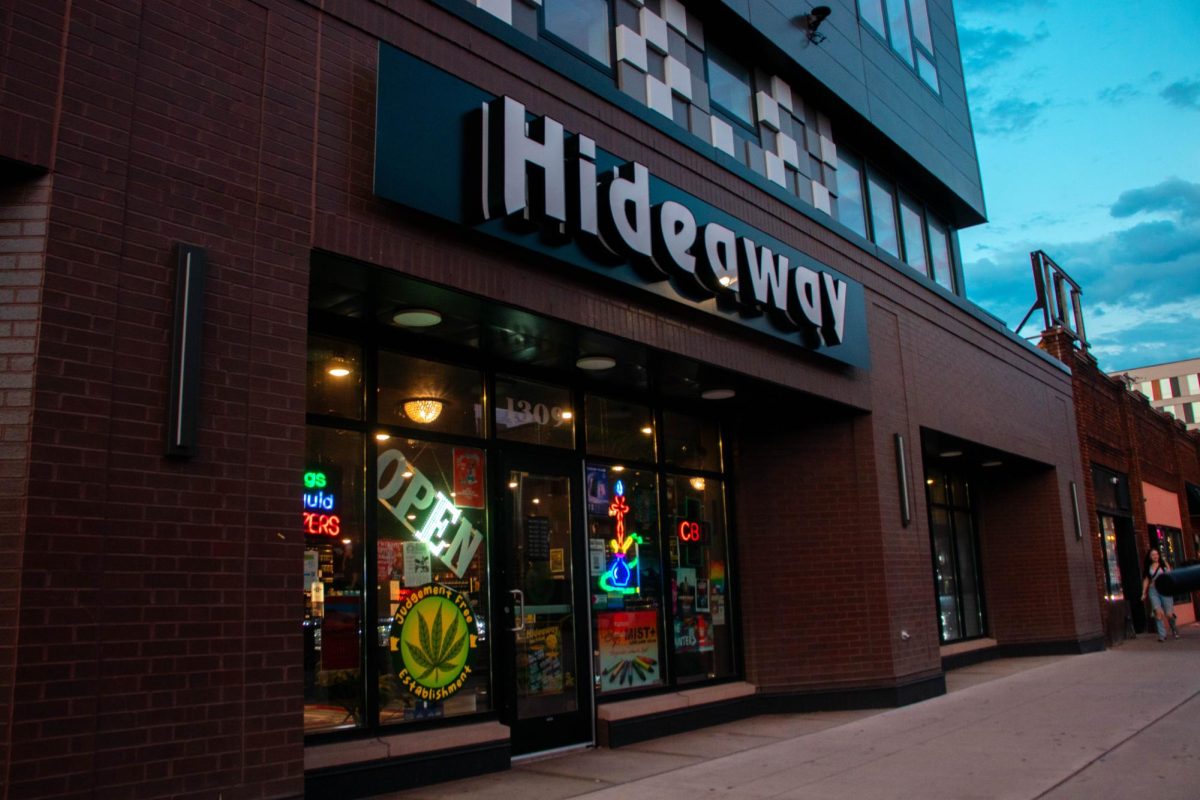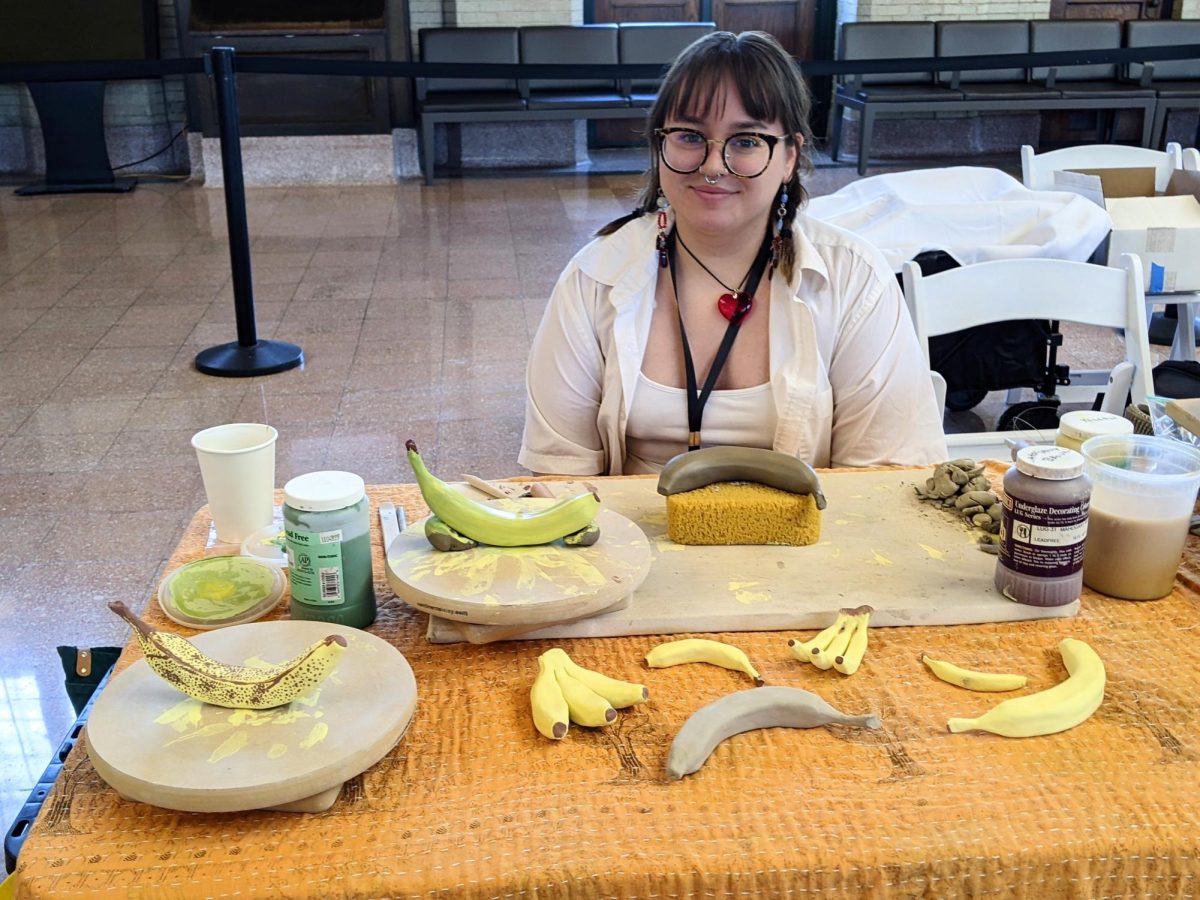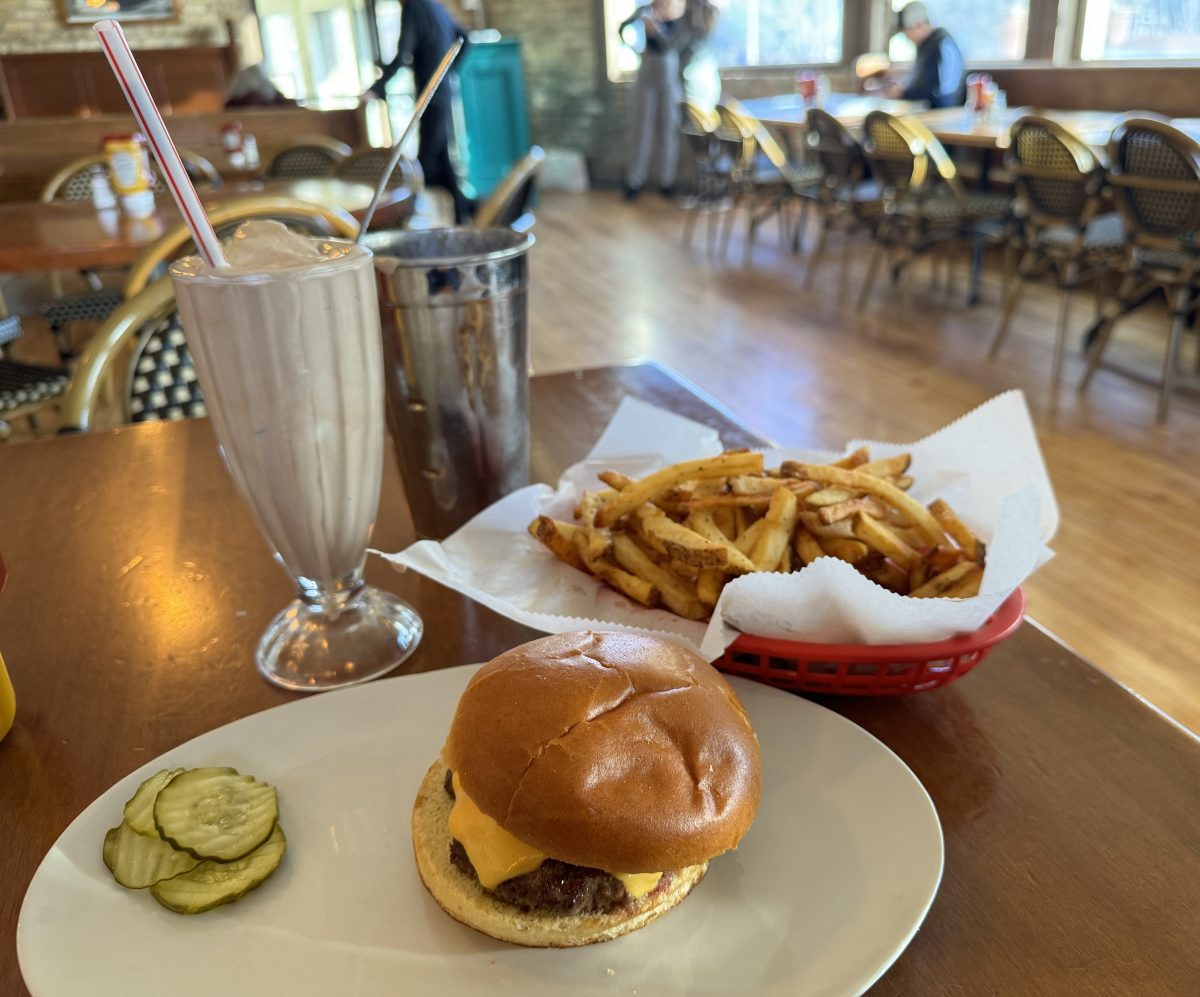What: Free wine tastings
When: 2 p.m.-7 p.m., Fridays and 2 p.m.-6 p.m., Saturdays at Sorella’s Wine and Spirits; 4 p.m.-7 p.m., Fridays and 3 p.m.-5 p.m., Saturdays at McDonald’s Liquor
Where: McDonald’s Liquor, 5010 S. 34th Ave., Minneapolis
Sorella’s Wine and Spirits, 1010 S. Washington Ave., Minneapolis
Price: Free!
Wine is a grown-up drink. There are exceptions, of course — the 40 bicyclers wobbling down Fourth Avenue in the middle of a Tour de Franzia — but we usually leave anything past the realm of bag-slapping to those with a salary.
Fellow students, I stand before you today to tell you that this does not have to be the case. We can be connoisseurs. We can talk in British accents about headnotes and tannins and body. We can be wine lovers just as much as people who wear monocles, without having to make it rain like the Monopoly Man. We just have to know how.
And that is why the College Cook went out to find those giants of humanity who were willing to lift the veil and peel back the shrouds of mystery — the veritable viniferous gurus that could lead us to sophistication.
The search wasn’t very difficult — it turns out they’ll teach everything they know for free every weekend at McDonald’s Liquor and Sorella’s Wine and Spirits.
“Wine is all about creating personal connections,” McDonald’s wine specialist Michael Hennessy told the College Cook during a tasting. “It’s about getting to know your wine purveyor and then letting them get to know your tastes and preferences.”
The fastest way to start building that palate is to attend a tasting, where small samples of various wines are presented by a specialist.
“The formula for a tasting is pretty easy,” Sorella’s in-store expert Michael Johnson explained. “Pour a little bit into your glass, and swirl it all around to mix air in with the wine. The official name for this is ‘volatizing the esters,’ but that’s ridiculous. I just call it ‘giving the wine a chance to succeed.’”****
That swirling aeration releases aromatic compounds up the sloped sides of the glass, where they concentrate for sniffing purposes.
“You want to really stick your nose in the glass,” Hennessy demonstrated, “and make sure to take your time teasing out the scents.”
“There are only four flavors but thousands of different aromas,” Johnson said. “So you want to make sure to give the wine at least three good sniffs. The first will tell you a little, the second a little more. The third sniff is special though — you’ll always catch something new on the third sniff.”
Common flavor “profiles” (characteristics) for a red wine will include dark fruit, pepper, tobacco, spice and cedar. Whites are often described as having citrus, tropical fruit, pine or grassy flavors.
“An incredible thing about wine is that it is one of the only substances on earth that will actually mimic the molecular compounds of different flavors. So when you say that a wine has hints of apple, that means that there is a chemical compound in the wine that you would also find in apples. And not because they flavored it with apples, but because it’s there in the grapes,” Hennessy said.
After your third sniff, it’s finally time to put those flavors in your mouth, where they belong. Draw in a fairly large mouthful, since “too small a gulp won’t really give you a good idea of the wine,” as Johnson told us.
Swish the wine all around your mouth so it can come into contact with your tongue and the olfactory bulb in the top-back of your oral cavity. Let the wine sit for a little, and don’t make judgments too soon — many good wines take time to develop flavors.
Besides the aromas already listed, wine has a few more characteristics that come into play while tasting. The interaction between sugars and acids create the “balance” of the wine and give it either a sweet or tart (dry) flavor profile. Complex organic compounds found in the skin called tannins give wine its mouth-puckering astringency and lasting finish; tannins are more prominent in reds than whites. Finally, the body of the wine —described as its “weight” or thickness in the mouth — is determined by the amount of alcohol and glycerin found in the wine.
“A good wine will take you on a journey. The flavors that hit at the start will say one thing, and then the middle flavors will say another. Finally the end notes come in, the finish. People say that wine should be like a good story — good beginning, good middle and a great ending,” Johnson said.
It’s not unusual for wine fanatics to wax literary on their favorite beverage — indeed, this apparent intensity is often what scares amateurs away. However, the nature and history of wine seem to call for such personification.
“Wine follows the history of humanity,” Hennessy said. “It’s been there since the start of time.”
Holding up a jar of loose volcanic sediment, he continued. “Wine only grows in places with tumultuous geography — places that have seen earthquakes, tsunamis, the rise and fall of mountains. Wine won’t grow in boring black dirt.”
All of this historical intensity may seem overwhelming, especially in the face of $30-a-bottle price tags. However, there are a lot of options for great wine at great prices. Hennessy points his customers to the growing selection of great box wines, where reduced packaging costs can mean $4- or $5-a-bottle boxes that last for weeks, even opened. Again, it’s about the personal connection — find a wine seller who’s willing to listen, and they will find you a $6 bottle that you can’t wait to buy again.
In the end, though, there’s only one way to write your own story with the fruit of the vine. As Hennessy puts it, “You’ve just got to drink!”
A Guide to Wine and Food Pairings
Wine is fun alone, but it’s even better when combined with a fine meal (or even a tasty snack). There are no hard and fast rules to wine pairings, but a few basic guidelines won’t hurt.
First of all, wines are named after the particular breed of grape used (Riesling, Cabernet Sauvignon and Merlot, for instance) and distinguished by the region they hail from (a Sauvignon Blanc from the Loire Valley of France will differ from a Sauv Blanc grown in Napa Valley, Calif.).
In general, you want to match the colors and strengths of your pairings while balancing strong contrasting flavors.
For instance, red wines were traditionally served only with beef, veal, pork and lamb while whites were served with seafood and poultry. This kind of color-bias also matches the stronger flavors of red meat with the more tannin-forward reds, but it does not need to hold true. A low-tannin red made from Chianti, Pinot Noir or Beaujolais grapes might make an excellent pairing with delicate fish, while a strong white Chardonnay will complement grilled beef.
Try to match sweetness and acidity, because pairing a sweet dish with a dry wine (cake with Sangiovese) may make the drink unbearably tart in comparison, and vice versa. On the other hand, beware of matching high-tannin wines (Syrah) with bitter foods (walnuts) as the flavors will strengthen each other to unpalatability.
Match the strength of the dish to the strength of the wine, lest a hugely robust Cabernet overwhelm a plate of lightly seasoned veggies.
Finally, experiment with opposites. Sometimes a sweet, light white such as a Riesling will perfectly counterbalance spicy Asian fare and temper a bit of the fire on your tongue.

















